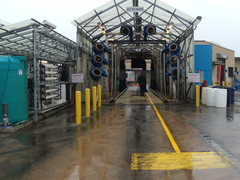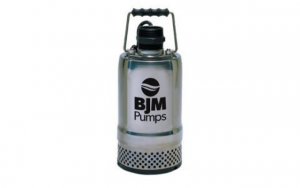Contributor: BJM Pumps
Throughout 2010 and 2011, the Southwestern United States endured one of the most severe droughts in recorded American history. For example, Texas received 15 inches less rainfall than average through the first ten months of 2011. This drastically lowered streams and reservoirs to some 50 percent of their capacities, which caused devastating losses to farmers and ranchers. As a result, explains Steve Cheuka, an Austin-based salesmen with Pumps of Houston (a pump distributor), “Water is like gold around here.”
While the 2010-2011 drought was severe, water shortages are no strangers to the Southwest. In early 2010, the municipal public transit system in the Southwestern city began a $1 million-plus project to change its washing facility from fresh water to recycled water in an effort to be more cost-effective and responsible in its water use.
This municipal bus service for a large Southwestern city covers some 1,200 square miles of territory, operating a fleet of 450 buses and 100 vans that carry an average of 255,000 passengers a day. Every night between 11 p.m. and 5 a.m., the vehicles head to a “bus barn,” or maintenance depot, where they are washed, cleaned, refueled and, if necessary, repaired for the next day’s routes. It takes about two minutes to wash each bus, inside and out.
Making Changes
An existing wash line was rebuilt and a second line was added. The challenge was to design a system that would reliably pump, filter and recirculate millions of gallons of water a day to keep the buses clean while using as little “liquid gold” as possible.
The transit department worked with a pump system packager to design and install the water-management equipment, which comprises more than 20 pumps in all. Among them are six from BJM Pumps, and they are used to pump runoff from concrete sumps into a water filtration system and to pump cleaned water from the filtration system back into the wash stream. Cheuka, whose company supplied the BJM pumps for the job, says he recommended BJM’s SX Series non-clog pumps and JX Series sump pumps because of their durability and stainless-steel construction. The pumps used are two each of BJM’s SX37CSS 5-horsepower pumps, JX15SS 2-horsepower pumps and JX400SS 0.5-horsepower pumps in duplex setups in three lift stations.
The rust- and corrosion-resistant stainless steel, Cheuka says, gives the BJM pumps an expected life span in underwater use of ten to 12 years instead of the five to six years expected for cast iron. Furthermore, he says, the heavy-duty seals on the BJMs can withstand the sand and grit that wash off the buses, collect in the wet wells and must be filtered out of the water before it can be reused. The BJMs have run flawlessly since their installation in April 2010, and it’s a good thing they were on the job when some of the hottest, driest weather ever hit the Southwest later that year.




